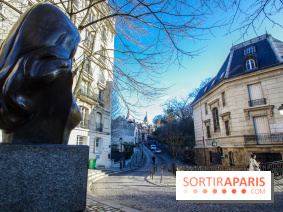The Place de la Bastille is THE symbol of the French Revolution, and holds an important place in French history. Discover its history!
In 1370, Charles V built a large fortress on the site of a fortified gate and a bastille (a small bastion) to protect himself from outside attack. It became known as the Fortress of the Bastille. Over the centuries, the fortress underwent a series of changes of use: it became a weapons storehouse, a reception hall under François I, then the royal treasury vault under Henri IV. But it was Cardinal de Richelieu, during the reign of Louis XIII, who gave it the function we all know: a state prison in which all opponents of the king and the regime were locked up. Among its most famous inmates: Voltaire, Montaigne, Beaumarchais and the Marquis de Sade!
Fortunately, the French Revolution arrived, and the storming of the Bastille was considered the first revolutionary act. On July 14, 1789, this symbol of the royal power of the Ancien Régime was besieged and destroyed stone by stone. Today, nothing remains of this edifice. The only traces of its past can be found on the ground, a triple row of cobblestones marking the former site. Stones taken from the rubble of the Bastille were used to build the Pont de la Concorde. The guillotine was installed for a few months in the brand-new Place de la Bastille, in 1794, but was soon moved to Place de la Nation at the request of the people.
On a happier note, did you know that it was on the Place de la Bastille that the first July 14th ball was held, in 1790? A French tradition that continues to this day!
In 1803, the famous Colonne de Juillet, 46 metres high, was erected at its center. This beautiful column, crowned by a gilded bronze statue named Le Génie de la Liberté, was inaugurated in 1840 to commemorate the victims of the Trois Glorieuses Revolution. However, Napoleon had another project in mind. He wanted a 24-meter-high bronze elephant sculpted and placed in the center of the square. But the project never got beyond the model stage. What a shame!
A little anecdote: during the Paris Commune, revolutionaries attempted to destroy the Colonne de Juillet, just as they did the Colonne Vendôme. They went under the Place de la Bastille, where the Canal Saint-Martin runs, and set fire to some petrol. But despite huge flames and shells fired from the Pont d'Austerlitz and Buttes-Chaumont, the Colonne de Juillet remained intact and standing tall!
One of the other iconic monuments on the Place de la Bastille is, of course, theOpéra Bastille. Inaugurated in 1989, this modern edifice was built by Carlos Ott on the site of the former Bastille train station.
Today, the Place de la Bastille serves as a popular gathering place for young Parisians in the evenings, on the terraces of cafés and brasseries, as well as a venue for political meetings, parades, citizens' marches, concerts, markets... Festivities in the tradition of the Arènes Nationales, a vast open-air venue inaugurated in 1851!
The Colonne de Juillet, closed to visitors in 1985, is due to reopen to the public very soon! While you're waiting to visit it, you can always try out the 3D Timescope terminal on the corner of Boulevard Richard Lenoir. For just 2 euros, you can discover what the Place de la Bastille looked like in the 15th century. A real leap back in time!























